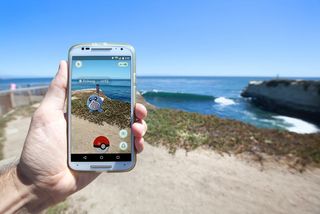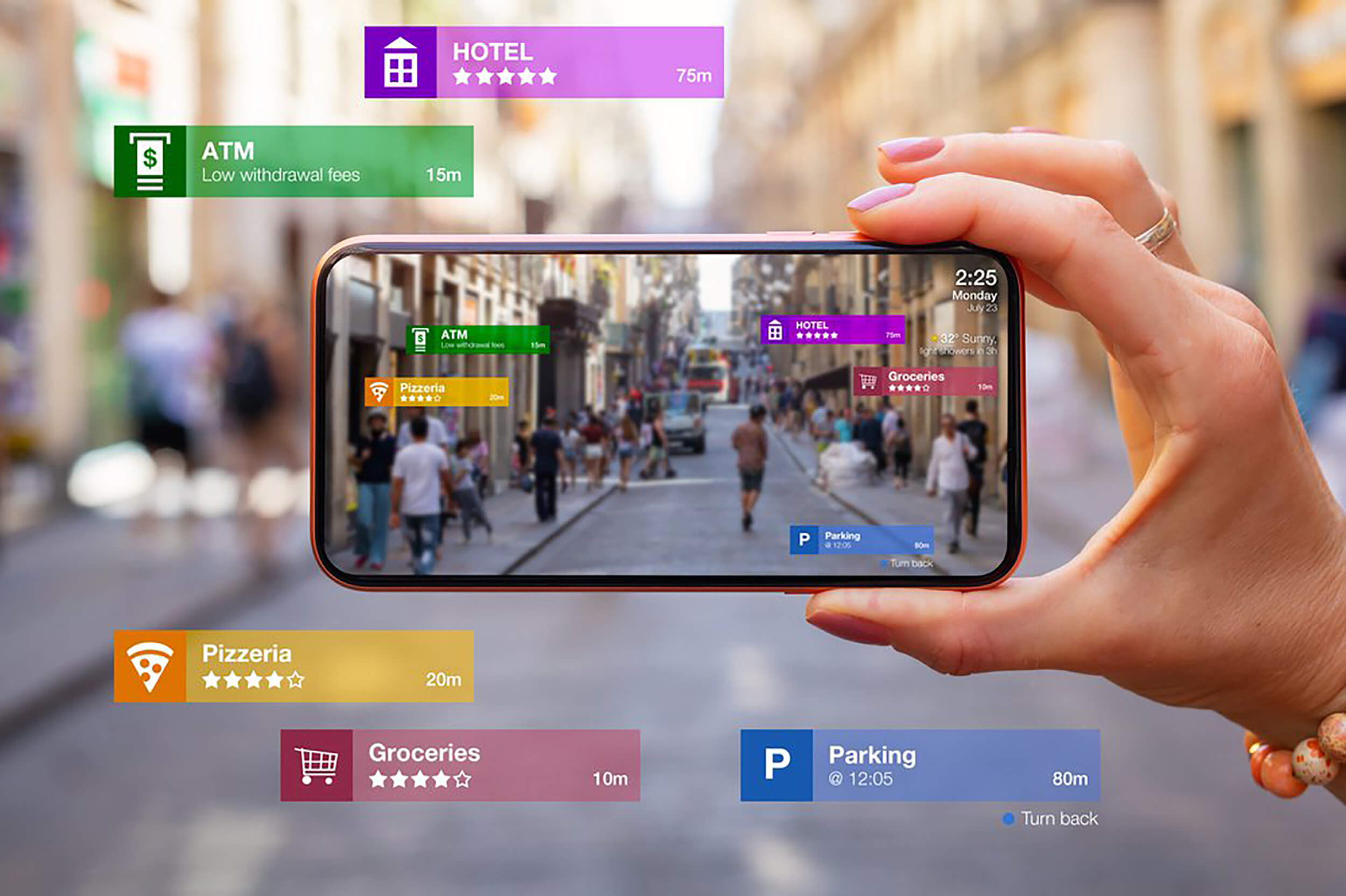Augmented Reality: Transform Your World with a Click!
- Update Time : Friday, October 25, 2024

Augmented Reality (AR) integrates digital information with the user’s environment in real-time. Unlike virtual reality, AR enhances the real world with visual overlays.
Augmented Reality is revolutionizing the way we interact with the world, overlaying digital content onto our physical surroundings. This immersive technology blends the virtual and real worlds, opening up innovative possibilities across various industries, from gaming and entertainment to education and healthcare.
AR applications can be accessed through smartphones, tablets, and specialized AR devices, bringing interactive 3D experiences to users’ fingertips. Its ability to provide enhanced, interactive experiences makes AR a powerful tool for businesses, educators, and content creators seeking to engage their audiences in a more dynamic way. As AR technology advances, it promises to become an integral part of our daily lives, transforming how we learn, work, and play.
:max_bytes(150000):strip_icc()/augmented-reality.asp_sourcefile-e00b4d086d1a41dda39cfa2e9f7aa11b.jpg)
Credit: www.investopedia.com
The Magic Of Augmented Reality
Augmented Reality (AR) blends digital components with the real world. It enhances what we see, hear, and feel. AR technology overlays computer-generated information on our natural environment. Images, sounds, and text become part of our surroundings. This creates interactive experiences that were once limited to science fiction.
The journey from sci-fi to reality is marked by milestones. AR’s evolution mirrors advancements in technology. Early concepts have now become practical applications. These applications impact education, gaming, and commerce. With AR, the line between the digital and physical worlds blurs.
How Augmented Reality Works
Augmented Reality (AR) blends digital elements with the real world. This process involves several key technologies.
Computer Vision allows AR devices to understand and interact with the real world. Sensors gather data about the user’s environment.
AR devices use cameras to capture the scene. Processors interpret this data, enabling real-time interactions.
Software algorithms are crucial. They create the seamless fusion of digital and physical views. AR experiences rely on these complex algorithms.
| Technology | Role in AR |
|---|---|
| Computer Vision | Interprets the real world |
| Sensors | Gathers environmental data |
| Cameras | Captures real-world images |
| Processors | Analyzes and processes data |
| Software Algorithms | Merges digital with real |
Ar In Daily Life
Augmented Reality (AR) changes how we shop and learn. It makes both fun and interactive.
Imagine trying on clothes without visiting the store. AR lets you do that. Just use your phone or tablet. You can see how clothes look on you through the screen. It’s like magic!
Learning gets better with AR too. Books come to life. Animals jump out of pages. The solar system spins around you. All these happen in your room. It’s like a field trip at home.

Credit: www.livescience.com
Augmented Reality In Gaming
Augmented Reality (AR) changes how we play games. It blends our world with game worlds. Imagine dragons flying in your backyard or solving mysteries in your living room. AR makes this possible, offering an exciting layer to gaming.
Gaming with AR feels like magic. It uses your device’s camera to mix game elements with your surroundings. This way, you can catch Pokémon in the park or race cars on your dining table.
| Game | Description |
|---|---|
| Pokémon GO | Catch Pokémon in real-world locations. |
| Ingress Prime | Explore places to control virtual territories. |
| Harry Potter: Wizards Unite | Become a wizard and find magical creatures. |
These games invite players outside, making adventures more lively and real. They turn ordinary places into playgrounds. Everyone, kids and adults alike, finds joy in discovering new challenges in familiar settings.
Business And Ar
Augmented Reality (AR) is transforming the business landscape. Retailers are now using AR to create interactive shopping experiences. Customers can try products virtually before buying. This new shopping experience boosts customer satisfaction and sales. AR also enhances marketing strategies. Brands can engage customers through immersive AR advertisements. These ads provide memorable experiences, strengthening brand loyalty.
AR is not limited to retail and marketing. It holds a vital role in industrial applications. Workers use AR for real-time data and 3D model overlays. This improves accuracy in manufacturing and maintenance tasks. Training becomes more effective with AR simulations. These simulations provide a safe environment for learning complex procedures.
| Industry | AR Use Cases |
|---|---|
| Retail | Virtual try-ons, interactive displays |
| Marketing | Immersive advertisements, engaging brand experiences |
| Industrial | Enhanced training, accurate maintenance |

Credit: rockpaperreality.com
Augmented Reality In Education
Augmented Reality (AR) is transforming educational settings, making classes more interactive and engaging. Through AR, students can visualize complex concepts with ease. Imagine learning about the solar system with planets orbiting around the classroom. This technology fosters a hands-on learning experience, enhancing retention and making lessons fun.
AR paves the way for the future of learning. It supports various learning styles and needs. Teachers can tailor lessons with AR, supporting students who learn best through visual and tactile means. As a result, AR in education promotes inclusivity and caters to diverse classrooms.
Challenges Facing Augmented Reality
Privacy and security concerns are paramount in the realm of augmented reality (AR). User data could be at risk of unauthorized access or breaches. Sensitive information, such as location data, can be exposed through AR applications. Developers must enforce robust data protection measures to safeguard user privacy.
AR also grapples with technical limitations. These include issues with hardware performance, such as processing power and battery life. High-quality AR experiences require advanced technology that may not be accessible to all users. Additionally, real-time rendering and spatial recognition can be challenging for current devices. Ensuring a seamless and immersive experience is a key hurdle for developers.
The Future Of Augmented Reality
The future of Augmented Reality (AR) shines with promise. Exciting innovations are on the horizon. These advancements will change how we interact with the world. Imagine putting on glasses and seeing more than ever before. Information and games will merge with our daily views.
AR’s role in society will grow. Soon, learning and work will blend with AR. Doctors might use AR to help heal. Teachers could bring history to life right in the classroom. Shopping will also evolve. You could try on clothes without wearing them. The ways we connect, learn, and play are set to transform.
Frequently Asked Questions
What Is Augmented Reality Technology?
Augmented Reality, or AR, overlays digital content onto the real world. It enhances our perception of reality by superimposing images, videos, or interactive data on our view, usually through devices like smartphones or AR glasses.
How Does AR Differ From VR?
Unlike Virtual Reality (VR) that creates a fully immersive experience, AR adds to the existing environment by overlaying digital elements. VR requires a headset to replace the real world, while AR can be accessed with a smartphone or special AR glasses.
Can AR Be Used In Education?
Yes, AR can be an effective tool in education. It can make learning more engaging by bringing textbooks to life with 3D models and interactive elements, helping to improve understanding and retention of complex subjects.
What Industries Benefit From AR?
Industries such as retail, healthcare, and manufacturing benefit greatly from AR. Retailers can offer virtual try-ons, doctors can visualize anatomy in 3D, and manufacturers can enhance training with real-time data and instructions.
Conclusion
Augmented reality is reshaping our interaction with the digital realm, blending virtual experiences into our physical world. As technology progresses, AR’s potential only grows, promising innovative applications across industries. Embrace this digital evolution; the future of augmented reality awaits.


















Leave a Reply